United States Patent and Trademark Office Releases New Guidelines for Assessing Enablement in View of Amgen v. Sanofi
February 12, 2024
By: Deirdre E. Sanders and Kelly Brewer, Ph.D.
- The new United States Patent and Trademark Office (USPTO) Guidelines emphasize that the In re Wands factors will continue to be used to determine enablement.
- The Guidelines confirm that the principles regarding the enablement requirement set forth in Amgen v. Sanofi apply to all fields of technology.
- Best practices continue to include providing enabling disclosure reasonable for claim scope, including disclosure of structural characteristics common to all claimed embodiments of an invention.
- Diligence in providing disclosure commensurate with the scope of claims may streamline examination and lead to a greater proportion of allowable claims.
On January 10, 2024, the United States Patent and Trademark Office (USPTO) released Guidelines for use in assessing enablement during examination of utility patent applications and review of granted utility patents in view of the Supreme Court decision in Amgen v. Sanofi. To meet the enablement requirement, a patent specification must describe the invention in such terms that one skilled in the art can make and use the full scope of the claimed invention.
While no new policies or procedures were announced in the release, which will be incorporated into the Manual of Patent Examining Procedure (MPEP) “in due course,” emphasis was placed on the central role the In re Wands factors will continue to play in assessing enablement. These factors include, but are not limited to: (A) the breadth of the claims, (B) the nature of the invention, (C) the state of the prior art, (D) the level of one of ordinary skill, (E) the level of predictability in the art, (F) the amount of direction provided by the inventor, (G) the existence of working examples, and (H) the quantity of experimentation needed to make and use the invention based on the content of the disclosure.
The Guidelines also point out that “since the Supreme Court relied on precedent from a wide variety of technologies [in Amgen], there is no reason to treat the decision as limited to antibodies or biotechnology; the principles set forth in this decision regarding the enablement requirement apply to all fields of technology.”
In Amgen, the Supreme Court held that patent claims, drawn to a genus of functionally claimed monoclonal antibodies, were invalid due to a lack of enablement. The patent holder, Amgen, failed to enable its claims to “potentially millions more undisclosed” cholesterol-lowering antibodies, described only in functional terms, beyond the 26 examples for which it provided structural description. The Guidelines reiterate the Supreme Court’s explanation that a specification need not always “describe with particularity how to make and use every single embodiment within a claimed class” if, for example, the specification also “identifies a quality common to every functional embodiment” that would “reliably enable a person skilled in the art to make and use all of what is claimed, not merely a subset.” Further, the Court in Amgen opined that “[w]hat is reasonable in any case will depend on the nature of the invention and the underlying art.”
The Guidelines particularly address “the essential inquiry in determining whether one must engage in more than a reasonable amount of experimentation” and the role of this inquiry in several post-Amgen decisions. Examples of post-Amgen findings of “unreasonable experimentation” set forth in the Guidelines include:
a claimed method that “simply directs skilled artisans to engage in the same iterative, trial-and-error process the inventors followed to discover” disclosed embodiments (Baxalta v. Genentech);
claims to a composition having a responder rate of 50% or greater (i.e., 50-100%) wherein “a skilled artisan, reading the specification, would not have been able to achieve higher than 62%” (Medytox v. Galderma); and
a claim containing 47 “or” clauses and potentially covering over 140 trillion embodiments (In re Starrett).
Throughout Amgen and the preceding and subsequent decisions in which enablement has been scrutinized, the view that “the more one claims, the more one must enable” has been a conceptual mainstay. In patent applications that claim multiple embodiments, practitioners should consider disclosure of common structures, additional examples, and detailed teachings that relate to all functional embodiments of a claimed invention. While additional upfront effort may be needed to provide enabling disclosure commensurate with the scope of the claims, doing so may avoid rejections and lead to a greater number of valid, granted claims.





